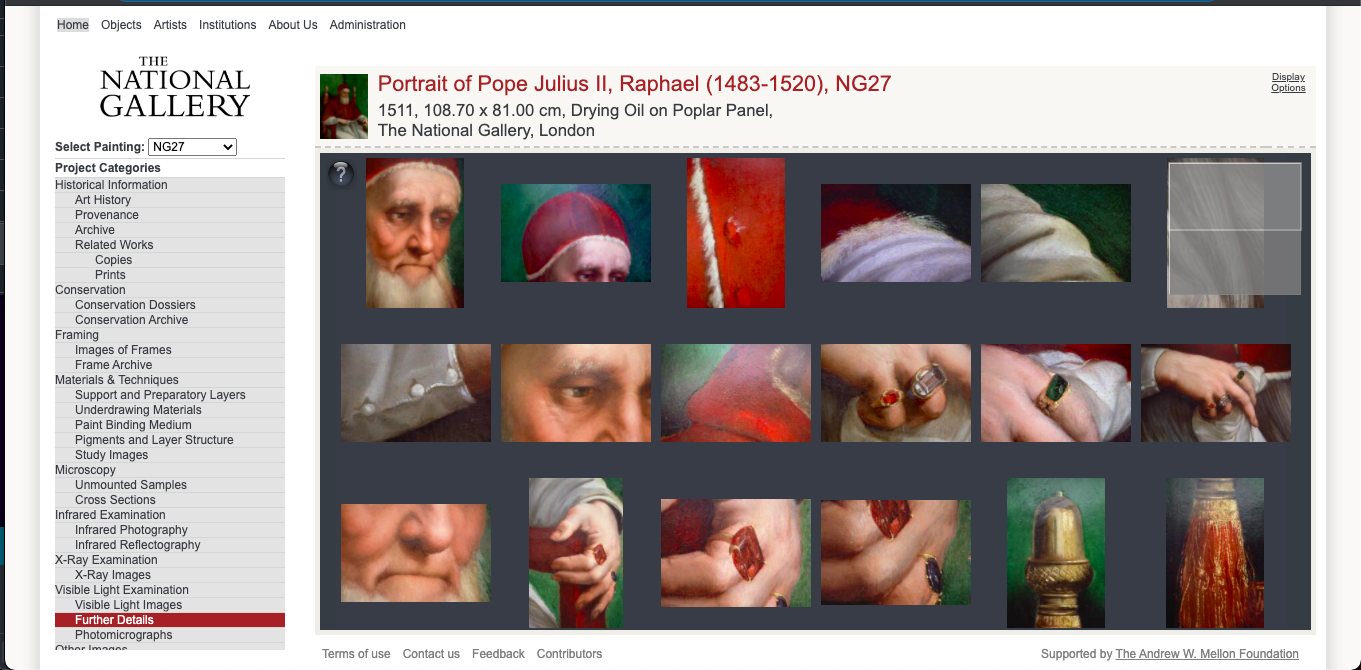Raphael | Portrait of Pope Julius II
About this Painting
This portrait of the careworn Pope Julius II (1443–1513) is usually dated to the one-and-a-half-year period during which he wore a beard. He grew it in 1510 as a token of mortification while recovering from a serious illness brought on by the loss of Bologna to the French, and vowed not to shave it off until French troops had been expelled from Italy, which happened in 1512. Julius was a great patron of the arts, commissioning Raphael to decorate the papal apartments in the Vatican and ordering the rebuilding of St Peter’s in Rome. The two golden acorns on the Pope’s chair allude to his family name, della Rovere (rovere is Italian for oak). The portrait was displayed on 12 December 1513, after Julius’s death, in the Roman church of Santa Maria del Popolo. It was enormously influential and became the model for ecclesiastical portraiture over the following 200 years.
An in-depth analysis of this painting is available on The National Gallery Website.
Connection to last week's item: Last week's artist, Giorgione, died of the plauge in the autumn of 1510 as attested in an exchange of letters between Isabella d'Este, wife of Francesco II Gonzaga, marchese of Mantua and her Venetian agent, Taddeo Albano. In the autumn of the same year, Pope Julian II was struck down by illness, leading him to grow the prodigious beard that is featured in this painting. A discussion about Giorgione's date and circumstances of death by Renata Segre and published the The Burlington Magazine is available in pdf here.
Additionally, The National Gallery Curator of 16th Century Paintings, Matthias Wivel, has prepared a video lecture about this week's item, which can be viewed on YouTube by clicking here.
Viewer
Further Resources
The Raphael Research Resource

The first Raphael to enter the Gallery, the portrait of Pope Julius II, was acquired with the Angerstein collection at the time of the foundation of the Gallery in 1824, and since that date a wealth of new information on the artist and the ten paintings by him in the Gallery has been amassed. As a result of this long-term research and the recent reassessment arising from the Raphael exhibition held in London in 2004/5, there is an extensive body of primary and published material relating to this group of paintings. It is housed in a number of different departments and archives in the Gallery and for the most part has only been available to internal and visiting scholars. The goal of the Mellon Digital Documentation Project, which began in 2007, was to gather and store all of this material, bringing together art-historical, technical and conservation-based information, and to make this valuable resource available over the Internet, to both specialists and the general public. To enter the resource and see the wealth of materials related to this week's painting, including x-rays, microscopy, infrared and visible light examinations of the panel, but also historical and documentary material click here.